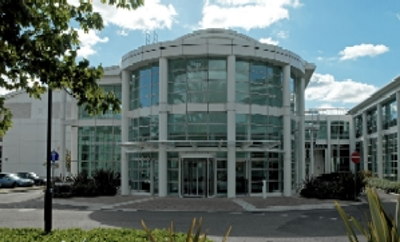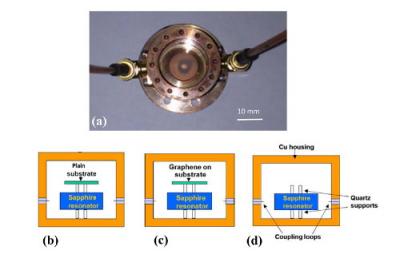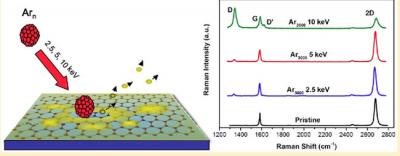A few weeks ago we visited the National Physical Laboratory (NPL) in Teddington, UK. We were given a tour of the facilities, the graphene labs and met with several key researchers and the business development team. The NPL is the UK's national measurement institute, and is a world-leading measurement standards institute - and certainly one of the leading institutes in the field of graphene metrology.

The NPL's facilities are very impressive, it's a beautiful campus set in the lovely town of Teddington - about half an hour by train from central London. The research facilities and laboratories were very well equipped and we pleasantly surprised to find out how nice and hospitable the researchers were. It was great to see so many graphene related activities at the NPL.
During our visit, we learned about three exciting recent research activities: a new microwave contact-less process to measure graphene conductivity, a new process to remove organic contamination from graphene sheets and a new system to measure quantum hall resistance that is in the process of being commercialized.
So first up is Professor Ling Hao's innovative contact-less non-destructive system to measure graphene's sheet resistance using a microwave dielectric resonator perturbation technique. This system can be used on single-layer and few-layer graphene samples, and is sensitive to a range of imperfections and impurities. This system can also be used to measure graphene's mobility - which can prove to be a major step forward in field of material characterization and testing.
 Contact-less graphene resistivity system setup
Contact-less graphene resistivity system setup
Second was a novel method of removing organic contamination from graphene sheets, under Dr. Andrew J. Pollard's leadership. This method is based on a controllable mass-selected argon gas cluster ion beam, which was used to clean single-layer CVD-made graphene sheets. The team was able to demonstrate removal of polymer residue and other carbonaceous material while minimizing the damage to the graphene itself. This new method is a promising tool to clean up CVD graphene on an industrial-scale.

Finally, we were introduced to a impressive project that is the process of commercialization in collaboration with Oxford Instruments. The researchers at the NPL developed a graphene-based method to measure quantum Hall resistance with metrological accuracy using a small desktop-sized cryogen-free system.
This system (which requires little experimental knowledge or laboratory infrastructure) is a significant improvement over existing systems - and drastically lower in cost (both manufacturing and operation). The NPL is aiming to commercialize this system (together with Oxford Instruments) and they hope this will enable the industry to accessibly achieve a paradigm shift and provide much more accurate quantum Hall measurement tools.
These are only a few of the exciting research activities taking place at the NPL, we appreciate the opportunity given to us to come and experience them for ourselves. A special thanks is owed to Andrew Pollard and Tim Prior for their time and efforts.